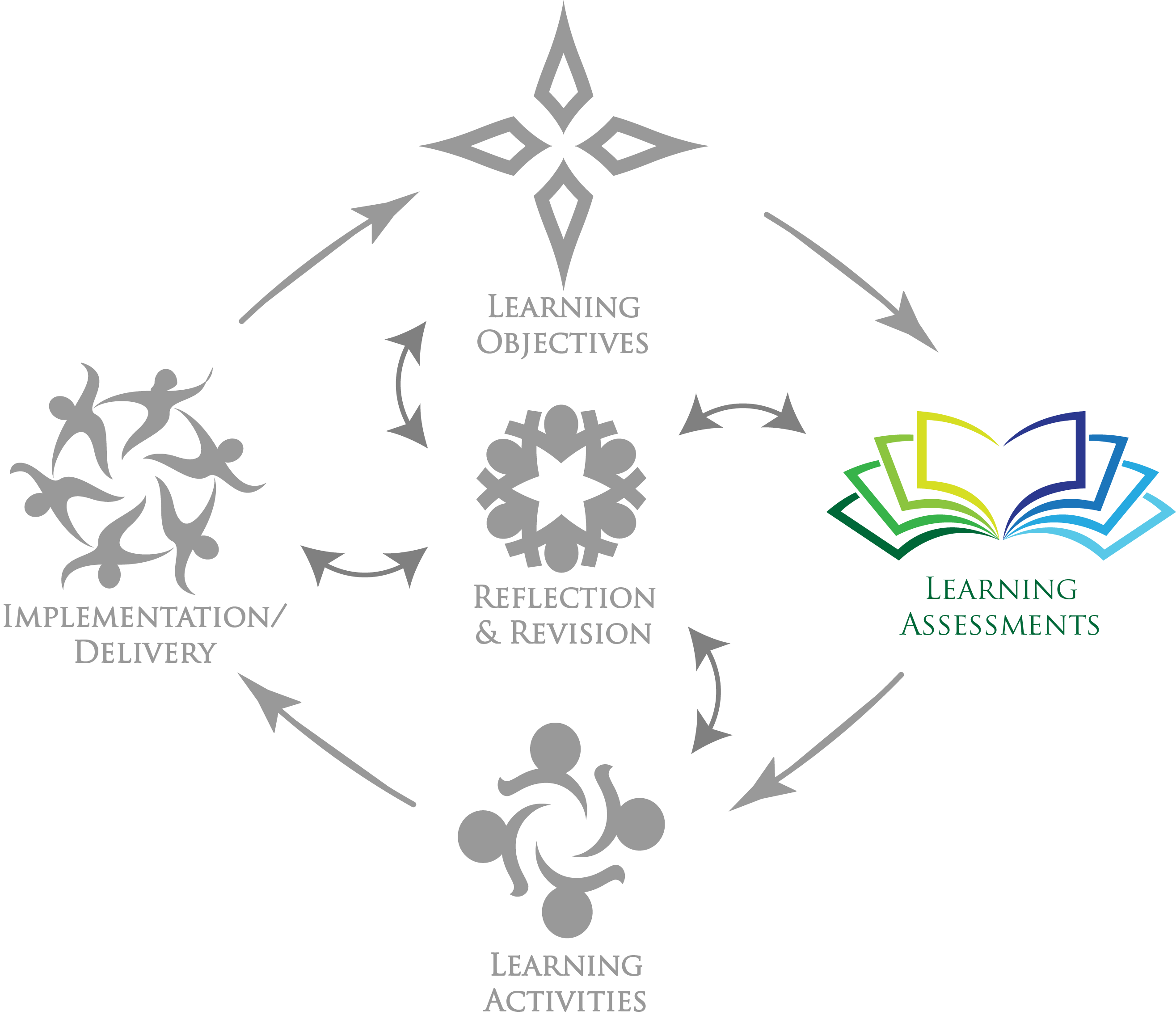Brief Overview
The Higher Learning Commission (UW’s accrediting body) offers this definition of assessment: “Effective assessment is best understood as a strategy for understanding, confirming, and improving student learning.”
The ultimate goal of assessment is to improve the relationship of teaching to learning. Good assessment helps point towards better learning activities, assessment activities, and other experiences that can help students increase progress towards course and program outcomes.
Assessment often focuses on several key terms:
- Susan Hatfield, an HLC Assessment Academy Senior Scholar, suggests that assessment should begin from clear learning outcome statements that are “learner centered, specific, and measurable.” (Hatfield, 2020). Student learning outcomes (SLOs) indicate what students should know or be able to do as a result of their participation in a course or program.
- Assessment activities are things students do to provide information about their knowledge and abilities. Assessment activities can include exams, essays and other written texts, project-based experiences, capstone experience, oral demonstrations, etc.
- Assessment tools are things teachers and others use to evaluate how well a student has met a student learning outcome. The most common tools are rubrics, especially for written work, presentations, and project-based learning. Activities and tools are related: an exam is an assessment activity (for the student); once completed, the exam serves as a tool to evaluate student knowledge and ability.
- Most assessment systems differentiate between formative and summative assessment--assessment that occurs “along the way” during a course or program versus assessment at “end of experience” when a course or program ends. In general, formative, “along the way” assessments can be used to adapt teaching to improve student performance on summative assessments.
Assessment can overlap with course-level grading, especially when student grades provide clear feedback to help instructors understand progress towards course learning outcomes. However, grades are often incomplete and approximate indicators of student progress. More importantly, student course grades are often too broad to be used to indicate progress towards larger, program-level student learning outcomes.
Resources for Understanding and Improving Assessment
Developing Rubrics, Instruments, and Maps
- Curriculum mapping (HLC: Susan Hatfield - Senior Scholar)
- Developing rubrics (HLC: Susan Hatfield - Senior Scholar)
- General education assessment (HLC: Susan Hatfield - Senior Scholar)
- Developing good exams (Carnegie Mellon University)
- Developing good rubrics (Carnegie Mellon University)
- Developing good formative and summative assessment activities (Yale)
- Some starting-point rubrics (AAC&U VALUE rubrics - free download)
- Additional rubrics for assessment
General Resources
- UW follows the Assessment Transparency Framework as its assessment model
- Another overview of assessment (Vanderbilt)
- An overview of program-level assessment development (Indiana U)
- Association for the Assessment of Learning in Higher Education (see the Resources tab)
- Student Affairs Assessment Leader
- Wayne State College Assessment Plan Review
- Google Doc of resources compiled by assessment specialists around the country
Note: Not everyone accepts performance-based assessment as the best model. See, for example, Asou Inoue’s argument for Labor-Based Assessment.
Want to take your assessment game up a notch? Consider getting involved in ECTL Scholarship of Teaching and Learning.
Want more help? Reach out to ECTL staff at wyocourses-inst@uwyo.edu


